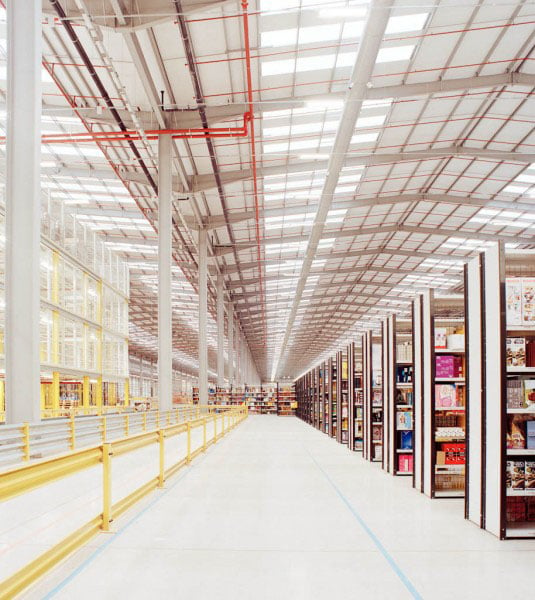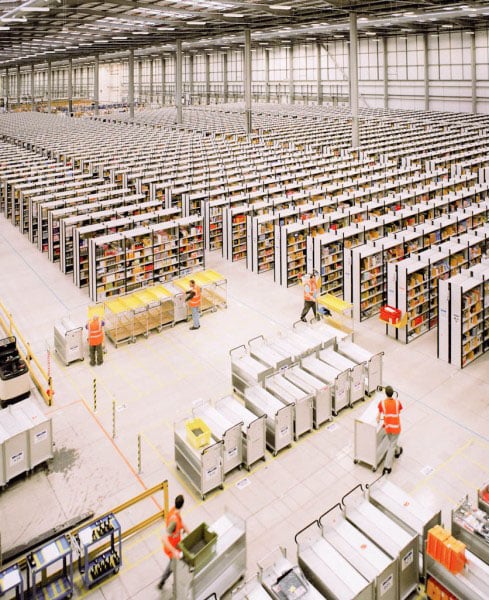Some Thoughts on Having Photographs Go Viral on the Internet
![]()
Over the last week or so, my series ‘Amazon Unpacked‘ has gone viral. The photographs were made to accompany an article researched and written for the Financial Times Weekend Magazine by Sarah O’Connor. The magazine came out at the start of February, and I put the gallery up on my website a week later.
Above are some screenshots of some of the websites that reproduced my ‘Amazon Unpacked’ photographs.

Now I’m no stranger to this phenomenon. It’s happened to some of my other photographs and features. “So what”, I hear you asking, “is the point of this blog post?”
Well I guess I just want to raise a few issues and ask some questions about this kind of appropriation, and how this practice affects the content creator. Here goes…
First of all, a quick list of things that concern me:
- None of the blogs in question (not a single one) thought to contact me before taking my photographs and publishing them under their own branding.
- All of the blogs then proceeded to post some of my photographs on Facebook, and we all know what Facebook’s terms are like for photographers.
- Most of the blogs published 8-12 of my images from a set of 13, reducing the need for their audience to seek out the original article on the FT or on my website.
- All of the blogs are effectively commercial ventures, with employees. Some of them are owned by media agencies or publishing companies.
- The vast reproduction of my images across the Internet has most likely reduced my syndication chances massively, taking away the potential for future income from these photographs.

Second up, the positives:
- All of the blogs were careful to attribute the photographs correctly and provide links back to my website. I had to contact It’s Nice That and request that they also credit Sarah O’Connor from the FT. Most subsequent blogs did the same, suggesting that the ‘source’ of the viral sets the tone for how it is then presented.
- There is no doubt that it has spread my name over a far wider range of viewers than I could ever hope to reach myself. To a certain extent this is good; however its hard to know whether there will be long term benefits from this.
Also, while it’s great that the photographs are being seen, by being so removed from the original article, they have become more like eye candy as opposed to being inextricably linked to Sarah O’Connors excellent contextual article. This is a shame.

So… I guess this blog post sits somewhere on the fence; it’s an attempt to try to understand how ‘new media’ works, and what is right or wrong.
I’ve got no doubt that the editors of these blogs have good intentions — while the bottom line is maintaining traffic to their own platforms, they are fans of the content that they appropriate and genuinely believe that the exposure that they bring to the artists featured is of great benefit.
This isn’t without truth, but I think that for photographers at least, things could be done better. Maybe I am an idealist or delusional, but here’s what I would like to happen:
- Blog author/editor contacts me and asks to feature my photographs.
- I say yes, and we agree on 2-3 images being used, with contextual captions, correct attribution, and links to the original features.
- Everyone’s happy. They get their feature and eye candy, making sure that traffic remains high to their website and their advertising revenue is secure. I get widespread ‘exposure’ and traffic to my website, yet I still retain some exclusive content meaning the feature still has some value for resale.
Finally, a big question: in the age of sharing and the viral nature of the Internet, where does one draw the line between ‘fair use’ and ‘theft’?
To conclude, when it comes to this kind of blog feature, somewhere down the middle would work for me. The only one of the aforementioned blogs who really got things right was Phaidon – they used 4 images, did their research about me and my work, provided extensive link backs to the source material, and even talked about the context and content of the images.
Perhaps it’s because they are an ‘old school’ publishing house who have retained some traditional journalistic values to accompany their more contemporary front of house? They still didn’t contact me first though!
Anyway, this is all food for thought. I’d be interested to hear of other peoples experiences; how you have dealt with similar situations?
About the author: Ben Roberts is a photographer based in West London, UK. Visit his website here. This article originally appeared here.